#quecha
Explore tagged Tumblr posts
Text
Histories of the Inca describe major epidemics in the century before Europeans stumbled onto the New World. The microbes responsible have been lost to history, unless their genomes are someday recovered.³⁰
30. Guaman Poma, a Quecha (indigenous Peruvian) nobleman, (...) described the military exploits of Pachacuti (the probable builder of Machu Picchu): "The defeat of Chile was made possible by the ravages of plague, which lasted for ten years. Disease and farming, even more than force of arms, brought about the downfall of the Chileans."
"Plagues Upon the Earth: Disease and the Course of Human History" - Kyle Harper
#book quotes#plagues upon the earth#kyle harper#nonfiction#history#inca#epidemic#passage of time#european#new world#microbe#lost#genome#recovery#guaman poma#quecha#peru#nobleman#pachacuti#machu picchu#chile#plague#disease#famine
0 notes
Text
People in Latin America: Spanish, Mayan, Quecha, Zapotec, African, Lebanese, Germans, Italians, Japanese etc.
What the rest of the world imagines Latinos to be: Mediterranean or Mestizo (Half Mesoamerican + Spanish) looking.
#US and Canada are not the only places in the Americas with immigrants#Anya Taylor Joy is latina#So is Cardi B#Gisele Bundchen#Ana De Armas#Ice Spice#Brazil#Mexico#Chile#Uruguay#Colombia#Mayan#Also the president of Mexico is Sephardi / Ashkenazi Jewish!
14 notes
·
View notes
Text

Analysis of Joseph's dish: Colada Morada
This dish, from what we can see in game, also includes T'anta Wawa (or Guaguas de Pan). These 2 items are connected to Ecuador's Dia de los Difuntos.
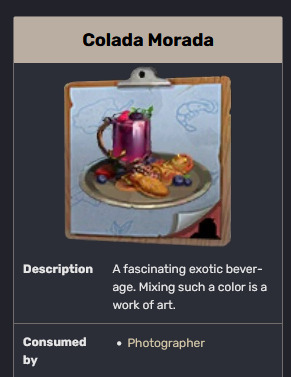
Dia de Los Difuntos allows Ecuadorian families to celebrate their departed loved ones. They also share drink and bread with them at the cemetery, clean the graves, and leave flowers as well.
Before the Spanish Conquest, people celebrated Aya Marcay Quilla (“The Month of the Raising of the Dead”) in November, which marked the end of the rainy season (when sowing was done and the land was ready for new harvest).
During this, they unearthed their mummified loved ones and escorted them around the village while they celebrated with food, drink, music, and rituals. After the Spanish came, mummification was outlawed and locals were forced to adapt.
T’anta Wawa (or “bread babies” in the Aymara and Quecha language) are baby shaped sweet bread with icing or colored dough for features or clothing.
Originally this bread was made of cornflour and pumpkin, but later made with wheat flour when the Spanish introduced wheat.
They are meant to represent the deceased. Supposedly, they look like babies because, when a person dies, it was said they regained the innocence of an infant.
Previously they weren’t sweet, and decorations were made using soot from the wood oven, as back then they were mourning figures (made with pork fat, butter, and eggs). It represented the deceased shrouded, as families couldn’t remove their families from graves anymore.
Colada Morada (or “strained purple” in Spanish) is a purple drink made from fruit (ex: strawberries, babaco, mortinos (Andean blueberries), herbs, spices, etc…).
The drink started as a mix of cornflour, potatoes, beans, peas, cabbage, achiote, and llama blood. Eventually it became the Colada Morada we know today, which uses purple corn as a base, but this time it’s turned into corn flour then mixed with an infusion of herbs, blackberry, mortino, naranjilla, and chopped fruits like strawberries and pineapple. “Strained” refers to the fruit that has been strained out of the drink.
Preparation of the drink varies by family and region (using different fruits like babaco or guava, or using something other than corn flour), and some enjoy the drink hot, while others prefer it cold.
Herbs used can include cinnamon, cloves, ishpingo, sweet pepper, orange leaf, lemon grass, lemon verbena, etc…
Other types of colada morada are common. Some are even alcoholic.
(*Apologies for any inaccuracies or mistakes. Please feel free to correct me on anything)
#idv#identity v#joseph desaulnier#photographer#idv joseph#identity v joseph#idv photographer#identity v photographer#sirenjose analyses and theories
7 notes
·
View notes
Note
Tell us about The Admirable! >:D
Lol, ily.
Actually, that's the adaptation of the Silmarillion I'm constantly writing and re-editing in my head, but I'm starting to list my most important points. Some of them could be reworked into fic, or into other fic.
The most important bit for me is the name, tbh. 'Admirable' is an epithet that can be used with certain Tolkien characters of great might and skill, but it's not always a good thing. Sometimes, it's almost an insult. At all times, it is a kind of doom.
Fëanor and his children haunt the narrative of the Silmarillion and Fëanor is most Admirable among the elves. Sauron may not be the main character of LOTR, but he's the titular one. He is the Lord of the Rings. and his name also means "Admirable".
He may not be the main antagonist in The Silm, but he sure does survive that guy. It's insane if you think about how Melkor was a relatively short evil haunting the world in comparison to how long Sauron haunted everyone with his presence.
Highlights you may wanna know:
I intend to write Sauron and Morgoth in such a "are they or are they not" relationship, Christians send me death threats
In my head, Dev Patel plays Fëanor, except on the days he plays Maedhros. He'd make an excellent Ulmo too
Assad Saman is my potential Curufin
Undecided on Celebrimbor
Speaking of, Sauron will kiss him on screen. Once. It will be the Judas Kiss to end all Judas Kisses, or at least it is to me
Undecided on who plays Fingon and Finrod but I'm giving the next 20 years for more quecha or aymara actors to show up and become options to play them
But when Fingon dies, I intend that episode to end in complete silence except for The Crying and the Wailing
EDIT: Actually you know what would be insane, if Dev Patel played both Fëanor and Maedhros even if it wouldn't fit entirely what I want for Maedhros, bc the THEMES AND MOTIFS AND BECOMING YOUR FATHER AND BEING UNABLE TO ESCAPE YOUR FATHER AND THE WAY I COULD WRITE CURUFIN HATING THAT THIS GUY HAS THEIR FATHER'S FACE WHEN HE'S NOT FATHER WHERE IS FATHER—
1 note
·
View note
Text
Blog Post #7
Peru’s healthcare system is really a mix of modern and traditional practices. The most common perspective appears to be a reliance on modern, Western medical practices. However traditional medicine, including the use of herbal remedies and practices by indigenous healers (curanderos), is also prevalent. Some Peruvians go as far placing sacred items around an altar, bottled herbs, sacred images, or magnetic stones would represent opposing forces good and evil. Then a few family members would gather around it for an extended period and this process as well as healing herbs, other rituals, and various lifestyle changes would go on for months. Peruvians from all classes and walks of life still believe in the power of brujos (witchdoctors), and curanderos (curers) to resolve all sorts of problems: sickness, broken hearts, business ventures, bad luck, and spiritual threats. Peruvians tend to be a very superstitious people, using things like charms, talismans, natural herbs, and potions all can help with the healing process. As well as chanting, blowing smoke, waving leaves, rubbing the body with herbs and stones, dancing, and in some places witchcraft. These old traditions must be evolving with modern times because well you can actually just google brujos or curanderos on google maps and 50+ results will pop up in Lima.


In Peru, death is often viewed through a cultural and religious lens. Catholicism the dominant religion, influences many practices surrounding death, funerals are significant events, often involving wakes, masses, and communal gatherings. Additionally, indigenous beliefs about the afterlife and ancestral spirits also come into view. Peruvians also Celebrate Día de los Muertos, which is celebrated on November 2nd, Peruvians with indigenous heritage believe that on this particular day the souls of the deceased visit the earth. Therefore families come together and visit cemeteries in remembrance of their deceased loved ones. Following death Peruvians also believe that in order to give loved ones proper time to grief on the one-month, six-month, and one-year death anniversaries, they have a mass to honor their loved one. They also don’t attend parties or other celebratory social events during year one of grief out of respect and in order to properly heal.
If this friend had little understanding of how life works in a different country I'd have to say to respect the local customs, traditions, and belief systems, especially regarding health and respect. You do not want to offend people. Obviously if they are taking this position they should have a pretty firm grasp in Spanish but it probably be very beneficial to learn the basics of Quecha as well.
0 notes
Text
"Unless I manage to get a collar on that fox's neck." she said though it was with a wink to show she was kidding. Yaro turned to her and then looked around the room. "Yes?" she said not seemingly phased by the size or the luxury of it all. Like everyone had this. "French, Fairy, and Quecha...it's an ancient language." she said. Elodie came forward smiling and gave a little bow. "I'm not going to touch you." Yaro told Sasuga. "I don't want you smelling like me at all...Elodie is going to bathe you in floral water...I can take the gift for you if you can undress."
Blood and Moonlight
Sasuga woke in what was at first an unfamiliar area but as she blinked fully awake she realized it was their closet that Coyote had decorated for them. She smiled and took a careful kiss from her mate who was still sound asleep next to her. It really had been an amazing night with the family and then with her husband. As she slipped from his arms, she took a moment to look at her reflection in the mirror, her fingers dancing over the fresh marks on her neck and hips. She couldn't have asked for anything more from the night and it was with some reluctance that she dressed. She picked out a pair of warm leggings and a short little skirt to pull over them with some knee high boots and a thick sweater. She slipped from the closet and moved to the bathroom to comb her hair and brush her teeth and get ready for the big day ahead. She gave a stretch and headed downstairs only to find a familiar face waiting for her. "Raphael..." she smiled and moved to greet him with a hug. "I see you are still alive." she smirked. "Want some tea? Coffee?"
@banditcoyote
5K notes
·
View notes
Photo

Har Har Mahadev!! Best trip till date!! #awsmcampsiteview #snowcappedhimalayas #prayers #blessings #bestiesbymyside #nikeofficial #trekking #decathalonindia stuffs #quecha N lots n lots of memories.... (at Tungnath) https://www.instagram.com/p/BcVpmNoB6Uz/?igshid=1s1ho8zyzvtzn
#awsmcampsiteview#snowcappedhimalayas#prayers#blessings#bestiesbymyside#nikeofficial#trekking#decathalonindia#quecha
0 notes
Photo

de 1ste week van mijn 70km training is klaar!
#hike#hiking#wander#wandering#girlswhohike#womenwhohike#wanderwoman#quecha#forest#chargingmybatteries#fitbit#blackeyelens#blackeyefisheye#luusje#2019#augustus19
0 notes
Photo

"Grazing Llama at Machu Picchu" A llama grazing on the terraced gardens of the ancient sacred Quechua (Inca) city of Machu Picchu. Cuzco Region, Peru. Available as #LimitedEdition #artprint in my #artfinder #shop https://www.artfinder.com/tom-hanslien #MachuPicchu #Cuzco #Peru #Quecha #Inca #llama #UNESCO #UNESCOworldheritage #SouthAmerica #grazing #travel #travelphotography #travelart #photography #guardiantravelsnaps #lensblr #wallart #art #interiordesign #atmospheric #idyllic #iconic #landscape #verdant (at Machu Piccho, Cusco, Peru)
#verdant#travelphotography#shop#photography#quecha#travel#limitededition#interiordesign#art#travelart#idyllic#artfinder#artprint#inca#landscape#southamerica#unesco#lensblr#machupicchu#llama#wallart#cuzco#guardiantravelsnaps#grazing#iconic#peru#unescoworldheritage#atmospheric
2 notes
·
View notes
Note
Cactus!! 🌵
cactus ⇢ something you’re currently learning (about)?
this is also a good one! i'm learning some pieces of my guitar, such as rosita by francisco tarrega and because by none other than the 4 fat sluts. my language learning has come to a halt since i graduated </3
#still eager to learn portuguese and quecha though. one day i'll work on them again#personal#thank you catie for the ask <3#asks
1 note
·
View note
Text
Blog Post #5
1. Spanish is the official language of Peru, but a large portion of the population also speaks Quechan which was the language of the ancient Incas.
2. A lingua franca is a language that is adopted as a common means of communication between speakers of different native languages. It allows people from different backgrounds to understand each other and engage in conversation. English has become a global lingua franca, it is widely used in international business, science, technology, entertainment, and currency. Its popularity is partly due to historical factors, such as the British Empire's global reach. An understanding of English within Peru can open doors to a vast array of resources, including academic research, technological advancements, and global connections. Fluency in English can enhance job prospects, especially in industries like tourism, international trade, and outsourcing, where English is often the working language. While English serves as a common language, it may not fully cover the cultural and local expressions that are in the native languages Spanish and Quechua. Misunderstandings can arise when the topics behind meaning, humor, or context are lost in translation.
3.
Hello - Hola - Spanish
Yes - Si - Spanish
No - No - Spanish
Please - Por Favor - Spanish
Thank You - Gracias - Spanish
Can you help me? - Yanapawankimanchu - Quecha
I don't understand - Manam hamutanichu - Quecha
I don't speak (name of the language) - No Habla Espanol - Spanish
My name is (your name) - Mi nombre es Kort - Spanish
I have absolutely no idea how to pronounce any of the Quechan phrases but all of the Spanish ones I had already known, so no difficulty in pronunciation here! Knowing these sayings when traveling can come in handy when interacting with local people, asking for directions, shopping, or simply engaging in conversation.
4.
¿Cuál es el exponente más sorprendente del pasado en América Latina?
La respuesta inmediata sería: Machu Picchu… y sí, claro que lo es, pero nosotros te decimos: hay más. Por todo el Perú podrás encontrar vestigios maravillosos que sorprenden al mundo, Machu Picchu es un must, pero también lo son Kuélap y Chavín de Huántar, Caral y Chan Chan, las Líneas de Nasca y Sipán… y seguiríamos enumerando!
What is the most remarkable vestige of the past in Latin America?
The obvious answer would be Machu Picchu… And, of course, it certainly is. But we believe there are many more. Throughout Peru you can find marvelous vestiges of the past that astonish the world’s travelers. Machu Picchu is a must-see destination, but Peru is also home to Kuelap and Chavin de Huantar, Caral and Chan Chan, the Nasca Lines and Sipan… and we could name even more!
I always found it interesting how in Spanish one or multiple words can have many different meanings, for a small example "y si" would immediately make me think of "and yes" but in this context it means "and of course". This makes reading and learning Spanish a bit challenging sometimes for you have to know all the different meanings of these phrases. Another thing I noticed was the amount of cognates in this paragraph, marvelous- maravillosos, must- must, vestiges- vestigos. I wonder if these words are cognates because they are more modern words when they were translated compared to words that have been around for centuries. Telephone - telefono for example.
5. Language influences our view of reality.
Language is not just a tool for communication it is what shapes how we perceive and interact with the world. The way we think, feel, and experience reality all involves the language and culture we were brought up in. Language is what reflects and reinforces cultural norms and values. For example the use of formal and informal pronouns in languages like Spanish (tu vs. usted) and French (tu vs. vous) emphasizes respect and social hierarchy, shaping the speakers understanding of social etiquette and relationships amongst eachother.

Ancient Incan headwear for Chieftan's and Priests

I forgot what the name of this city was, but nonetheless a gorgeous view !
0 notes
Photo

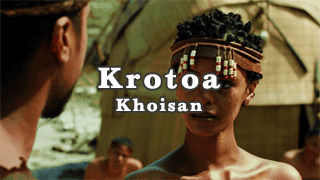
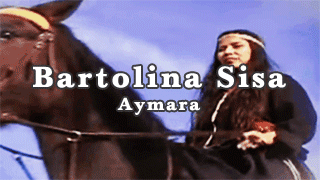
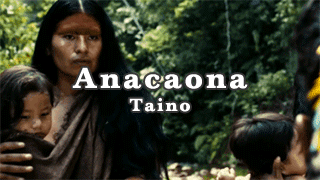

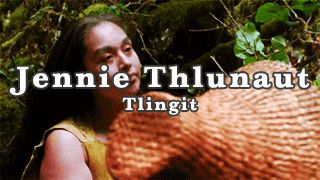


Historical Indigenous Women & Figures [4]:
Yukie Chiri: talented transcriber and translator of Yukar (Ainu epic tales). Growing up bilingual and speaking both Ainu and Japanese, Chiri would later catch the attention of a Linguist, who helped her to transcribe, preserve, and publish multiple Ainu epic tales.
Krotoa: Niece of Chief Autshumato, and Khoisan translator for the officials of the Dutch East India Company in South Africa during the founding of the Cape Colony. Though the exact circumstances of how are unknown, Krotoa came to work in the household of Jan Van Riebeeck and became known as “Eva”, and gained a higher position within the Dutch hierarchy as she additionally served as a trading agent, ambassador for a high ranking chief and peace negotiator in time of war. She exemplified the dependency the Dutch had on the Khoisan in her homeland.
Bartolina Sisa: Woman known for being a leader against Spanish colonialism in Peru, she often took up arms in uprisings alongside other Aymara and Quecha. She was the commander of the siege of La Paz, though she was eventually captured and killed. International Indigenous Women’s day is celebrated on the day of her death in her honor.
Anacaona: Also known as “Golden Flower”, she was a Poet among the Taino, who also served as her brother’s advisor as Chief. She took multiple efforts to try make peace with the Spanish in Haiti, including the arranging of marriages. She was eventually killed by the Spanish, but is remembered today as an intelligent and kind leader.
Matoaka: More famously known as “Pocahontas”, Matoaka was the favorite daughter of Wahunsenacah, Chief of the Powhatan confederacy. Though the story of her saving of John Smith is myth and fabricated by Smith, she did indeed partake in multiple efforts to attempt peace with the English. According to Powhatan oral history, She married the warrior Kocoum & had a child with him before being kidnapped and taken to England.
Jennie Thlunaut: Prolific Tlingit artist and weaver, who is credited with being a major factor in keeping Tlingit Chilkat weaving alive. Her works and artistry have been celebrated by many, including the Smithsonian Institution and Harvard Museum of Natural History.
Elsa Laula Renberg: Saami activist, who wrote and published a 30-page pamphlet in Swedish that spoke about Saami struggles and oppression, making her the first Saami woman to have her works published. She later founded the South Sámi Fatmomakka Association, which was the first Sámi activist organisation.
Toypurina: Famous for her opposition of Spanish missionaries & their forced assimilation of the Tongva in California, she was a medicine woman who participated in the planned 1785 rebellion against the Mission San Gabriel, where she recruited six of the eight villages which participated in the attack.
part [1], [2], [3]. Transphobes need not reblog and are not welcome on my posts.
#historyedit#history#native american history#asian history#indigenous history#women's history#ndn#indigenous#ainu#saami#justin's edits#edit: I have replaced Nandi with Krotoa due to the helpful advice of an anon who said it would be more appropriate!
821 notes
·
View notes
Text
Hero OCs Ethnicities [Updated]
Mixed w/ Japanese
Sorami Inoue/Stormchaser & Akihiro Amarai/SolFlare: Nigerian/Japanese
Sakura Ankokugai/Persephone, Sarubia Yamaniwa/Scarlet Sage, & Hanako Yamaniwa/Gardenia: Peruvian Quecha/Japanese
Sol Seiza/Helios, Phoebe Seiza/Selen, & Akemi Seiza/Eos: Afro-Greek/Japanese
Irefumi Hitsugaya/InkStain: Afro-Brazilian/Japanese
Joou Hitsugaya/Splendor: Afro-Dutch/Japanese/Taiwanese
Renji Yamaniwa/Gaius: Ghanaian/Japanese
Hoshimi Sorakami/Stellara: Cameroonian/Japanese
Fubuki Toshiba/Frostbite & Yukito Toshiba/Jack Frost: Swedish/Japanese
Kaisho Kurakimichi/Agnibeast: Filipino/Japanese
Hibana Maikaru/Superstar & Hoshi Maikaru/Stardancer: Black/Japanese
Lancelot Akirakami/Phoenix Knight: White American/Japanese
Iris Mochizuki/Spectra Iris: Afro-Trinidadian/Japanese
Utako Mochihara/Moonlight Harmony: Vietnamese/Japanese
Brisa Kumosuku/Zephyrine & Sunny Kumosuku/Skyward: Black/Japanese
Chie Hanegin (Birth name Angelique Hanegin)/Valkyrie & Émilien Hanegin/Silverwing: French/Japanese
Amane Tsuyo/Soluna: German/Japanese
Shiho Hoshokura/Queen Jewel: Afro-Dutch/Japanese
Otome Kenno: British/Japanese/Chilean
Not Japanese
Otoha Yuwauta (Birth name Priyanka Shantha Suman)/Sirenia: Tamil Indian/Arabic
Nebahat Bozkurt/Aegis: Turkish Romani
Evan Jordana/Apex, Evander Jordana/Beast, Evangeline Jordana/Wildcat, & Eva Jordana/Pantherlily: Irish Jew
Levina Chosoku/ShockRock: Hispanic-American
Utau Kurakimichi (Birth name Seo-yeon Yun)/Pasithea: Korean-American
Claire Conan/Empath & Joy Somers Conan/Euphrosyne: British
Urraca Carvalho Jordana/Gorgona: Afro-Brazilian
Tecna Arcega/Electrixa: Filipino
Marco Castillo-Delgado/Power InOut: Mexican
Merida Alexander-Defoe/Queen Amazonia: White American
Darlene Amelia "Dolly" Hirano-Starr: Apache/Mexican
Tetsubasa Ichiki (Alias Amparo Rocha)/Iron Angel: Brazilian
Ruslana Kozlova/Winter's Kiss: Russian
Carolina Toyomitsu/Force: African-American
Regina Matthews/Femme Fatale: African-American
Hoshihime Sorano/Starshine & Kageo Sorano/Shadowstar: Chinese
Ganbaatar/Vulcan & Bolormaa Sharav/Lady Lava: Mongolian/Qatari
Pearla Ocean-Mahi'ai/Amphitrite: Indigenous Hawaiian/African-American
Parker Lovett-Flynn/Mattershift: White American
Arisa Junshin (Birth Name Jiè Xiùying Yang)/Miss Order/Rule: Chinese
Gabriel Estrada/Battlemaster: Peruvian Quecha
@floof-ghostie @calciumcryptid @labgoth @elflynns-horde-of-stuff @opalofoctober @pizzolisnacks
12 notes
·
View notes
Text
Things That Weren't Invented/Discovered By White People: Food Edition
Noodles: The first evidence of noodles show they existed 4,000 years ago in China. These were at least partially made of millet. This recipe spread to Japan as well.
Maize: Interestingly, it can be said that maize was invented by indigenous Mesoamerican peoples more than it was discovered or domesticated. Its natural ancestor was teosinte grasses, but it was the result of careful breeding and deliberate artificial selection. Human intervention is required for corn to propagate, it could not exist on its own in the wild. Corn quickly spread up and down the Americans from its origin point in what is now Mexico. It is perhaps the single most important crop in the world today, accounting for more production than any other grain and a staple of cuisines around the world.
Jerky: A method of preserving meat before refrigeration, jerky was invented by indigenous Andeans. The word 'jerky' is an Anglicization of the Quecha word ch'arki which was a staple for Inca travelers using the famous Incan road system. In fact, the Inca Empire was able to make llama ch'arki with a freeze-drying process in the 16th century!
#history#world history#food#tw food#noodles#maize#corn#jerky#inca#indigenous#native americans#mesoamerican history#china#chinese history#japanese history#peru
42 notes
·
View notes
Photo

Discute la tesi di dottorato in lingua Quechua: è la prima volta nella storia Dopo 500 anni, la lingua Quechua entra in un’università. Una dottoranda si è infatti aggiudicata la lode discutendo il proprio elaborato finale nell'antica lingua latina.
0 notes
Text
Grishaverse name meanings bc I don't think it's been done yet
Kaz- famous destroyer (of peace)
Inej- faithful, the faithful one
Jesper- Treasurer
Matthiad- Gift of God
Nina- little girl(Spanish), closure of fish(Babylonian) , and fire(Quecha)
Wylan- Wayside land
Kuwei- to wilt or wither
Pekka- stone
#six of crows#leigh bardugo#crooked kingdom#jesper fahey#inej ghafa#kuwei yul bo#the dregs#mattias helvar#nina zenik#kaz brekker#wylan van eck
4 notes
·
View notes